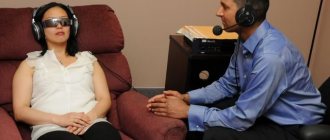The human body is daily exposed to the harmful effects of external and internal factors. Physical and emotional state depends on many circumstances that directly or indirectly affect his health and mood. Often, in the smooth course of life, disruptions, critical moments, and mental cataclysms occur, which negatively affect a person’s well-being and plunge him into an unstable psycho-emotional state. One of the powerful irritants of the nervous system is neurosis. What it is? Why does he appear? How to get rid of neurosis on your own?
Neurosis concept
Neurosis is a severe disorder of the nervous system. It is characterized by depressive-stagnation processes in the human consciousness, increased irritability and is considered a serious disease. A long stay in such a state breaks a person, forcing him to succumb to the harmful effects of problems invented by himself and the circumstances of his life caused by him.
But how to get rid of obsessive neurosis on your own? After all, the field of its influence extends to a wide range of functions of the human body, affecting its physical excitability, mental irritability, leading to performance disorders and diseases.
Causes
What are the prerequisites for the occurrence of this type of disease? Is it possible to get rid of neurosis on your own if the root of the problem lies in the complex underlying causes of its occurrence? Neurosis can occur in the following situations:
- Stress. Constantly being in a stressful state, regular scandalous situations, nervous tension and being on the “limit” - all this contributes to the development of a severe form of psychological imbalance and neurosis.
- Overwork. Heavy or prolonged physical activity, regular refusal to rest due to work and career growth, excessive desire for self-realization in the professional field and lack of time for normal sleep stimulate the development of a persistent state of increased excitability in the body, which inevitably leads to exhaustion and loss of strength.
- Obsession. It happens that situations happen in life or actions take place that are opposite to the desires and aspirations of a person. Due to disagreement with this state of affairs and complete non-acceptance of what is happening, the indignant consciousness provokes an obsession with this unpleasant moment and constantly makes itself felt in manifestations of acute neurosis.

Thus, victims of this pathology who have experienced the torment leave not the most unfavorable reviews. How to get rid of neurosis on your own? In order to answer this question, you need to know the nature of the manifestation of such an abnormal psychological state.
Effective meditation techniques for anxiety, stress and fear
It is not for nothing that the 21st century is called the time of depression and anxiety disorders.
The pace of life is increasing, people are constantly striving to do everything in the world and achieve results in their career. High competition and constant stress lead to chronic anxiety. This condition often interferes with a person’s ability to live—make decisions and even engage in everyday activities.
Meditation helps reduce nervous tension, allowing you to effectively combat stress and anxiety.
Meditation as a method of relaxation
Since ancient times, people have been familiar with relaxation techniques. This process allows a person to be alone with himself, to disconnect from problems and experiences.
Meditation for anxiety and fear helps you feel your body, organize your thoughts and feelings, and better understand your emotions.
Properly carried out relaxation helps relieve mental stress, as a result of which a person’s sleep improves, strength appears and anxiety disappears. Having gotten rid of stress and panic, the body directs all its energy to restoring health.
A study conducted at Johns Hopkins University found that the effect of meditation on fear and anxiety was comparable in magnitude to taking antidepressants. Thus, you can achieve peace and harmony even without drug treatment.
The practice of meditation helps people:
- stop being nervous for no reason;
- increase stress resistance;
- gain peace of mind;
- get rid of insomnia, normalize sleep;
- improve your mood, experience positive emotions more often, fill spiritual emptiness;
- lower blood pressure, improve blood circulation;
- get rid of chronic fatigue and loss of strength;
- improve concentration and memory.
Usually, people first encounter such techniques at an appointment with a psychologist or psychotherapist. The doctor talks about the essence of meditation, techniques and possible results. Not everyone has the opportunity to visit a specialist, but the advantage of relaxation is that it can be practiced at home without outside help.
How to meditate correctly
The main goal of meditation for depression and anxiety is to relieve nervous tension and fear through relaxation. It must be remembered that anyone can master its technique. At first, things may not work out and you may be distracted, this is normal. However, the more a person practices meditation, the easier it becomes each time.
To begin, choose a suitable location. A quiet home environment where no one can disturb you is best. It is important to warn loved ones so that the person is not distracted during meditation.
The ideal option is a room hidden from prying eyes and sounds. However, if there is no such room, then you cannot give up trying to relax. Even meditation in a noisy crowd can be effective if you set yourself up for a positive result.
The relaxation technique takes 15–20 minutes. At the initial stage, it is recommended to carry out it 2 times a day at a convenient time. The easiest way to do this is after waking up and before going to bed. Morning meditation will allow your brain to wake up and prepare you for the start of the day, while evening meditation will relax you and relieve fatigue, tension and anxiety.
To complete the task, take the correct posture. The main requirement is a straight back, which should not lean against the back when sitting on a chair. Otherwise, each person chooses a position that is comfortable for him.
However, when taking a lying position, there is a risk of relaxing to such an extent that you can fall asleep. At the initial stage, the best position is in which a person sits on a chair, but does not lean anywhere. This will reduce the load on your back, and it will not get tired in 15 minutes.
The first stage of meditation is to turn off your thoughts. Closing your eyes, all attention should be directed not to internal experiences, but to the breath or mantra.
If a person notices that he is starting to think about something again, then calmly return his attention to his starting point. At first, thoughts will always try to fill your head, but over time the brain will learn to drive them away. The easiest way to focus on breathing is to watch your slow inhalations and exhalations, without thinking about anything.
Tips for initial meditation:
- There is no need to wait for it to work the first time - the effect will not appear immediately. If at first it seems that everything is useless, you should not get upset and stop practicing. This is the stage of self-analysis and awareness.
- There is no need to think that you should stop thinking. The basis of meditation is relaxation and turning off consciousness; you should not blame yourself for the fact that sometimes some thoughts still slip into your head during practice. Try to get them back on track and not dwell on failure.
- Note your mood after class. You can keep a notebook in which to write down your feelings after completing a practical task. Over time, you will see that meditation gives you a good mood.
Relaxation according to Jacobson
Another effective technique is Jacobson relaxation. It is suitable for those who experience anxiety and stress, feeling muscle tension. Its essence is the consistent tension of a group of muscles and their subsequent relaxation.
The advantage of this meditative technique is that it only takes 5 minutes to complete, and you can do it even in transport or during breaks between work.
For 20 seconds, it is necessary to consistently strain the muscles of the arms, legs, abdomen, back, head and face, then relax the tense area for 30 seconds. Exercises to relieve neuromuscular tension:
- clench your hands tightly into a fist;
- spread your arms to the sides, bend them at the elbow and tense them;
- bring your shoulder blades together and lower;
- raise your eyebrows high and connect them together;
- close your eyes and wrinkle your nose;
- tighten your abdominal muscles;
- press your feet into the floor;
- straighten your legs and pull your feet towards you;
- curl your toes.
All these exercises are performed sequentially for 20 seconds each, with all possible strength. This is followed by a 30-second relaxation period, during which the muscles rest. After completing the entire technique, the person should feel that his body is completely relaxed. If tension is still felt in some area, then repeat the technique with that muscle.
Meditation is a way to get rid of fear, anxiety and stress, which shows high effectiveness along with medications. There is no need to expect quick results and despair if something doesn’t work out at the initial stage.
Over time, a person begins to recognize his body more, relax and be distracted from obsessive thoughts. With a good attitude and the correct technique, the effect of meditation will not take long to arrive.
Source: https://urazuma.ru/trevoga/meditaciya.html
How neurosis manifests itself
The symptoms of the described nervous system disorder are multifaceted. Manifestations of neurosis are not only unpleasant, but also fraught with a detrimental effect on a person’s performance and normal functioning. The main criteria for their determination are the following changes in behavior and well-being:
- Sleep disturbance, insomnia, difficulty falling asleep.
- A feeling of constant tension, both moral and physical in the form of muscle stiffness.
- Increased irritability.
- Excessive sensitivity to temperature changes, sharp reaction to light, loud sounds, noises.
- Involuntary movements of the limbs - jerking the leg or fiddling with the fingers, knocking the feet on the floor, or some other unconscious urge to nervous movement.
- Excessive sweating and sudden perspiration.
- Incoherent speech, hesitations and defects in pronunciation.
- Increased sensitivity, increased vulnerability, frequent urge to cry.
- Panic fear and hysteria.
- Mania of persecution or a far-fetched premonition of something bad expected in the future.

It is not always possible to get rid of neurosis on your own, as a painful condition and deterioration of mental balance, without outside help. Therefore, people should seek help from psychologists.
Symptoms of neuroses
Neuroses with fears are characterized by withdrawal into oneself. With neurasthenia, a person may constantly worry about something.
Psychological symptoms of the disease also include:
- weakening of memory;
- increased sensitivity;
- irritability;
- high or low self-esteem.
A special category consists of somatic symptoms.
These include:
- prolonged headaches;
- discomfort in the heart, abdomen, joints, muscles;
- frequent urination;
- hand trembling, etc.
Often mental disorders provoke a decrease in potency, disturbances in the functioning of the vestibular apparatus, insomnia, refusal to eat or, on the contrary, overeating.
Symptoms of the disease are contradictory and vague. Some people constantly experience a feeling of fear, others incorrectly prioritize even in everyday matters. It is almost impossible to predict the behavior of a person with neurosis.
Effect on the nervous system and mental state
A disorder in the form of neurosis is not such a harmless condition. Its impact on the human body causes significant damage, manifested in mental imbalance, emotional stress, and various pathologies. This mode of existence prevents a person from living, working, enjoying little things and pleasant moments. Therefore, it is important to pay attention to this disorder in a timely manner and try to get rid of it yourself or with the help of specialists, if nothing works out without outside help.
Suggestion
Treatment by suggestion is indicated for all types of neurosis. This method has virtually no contraindications and is easily tolerated by patients. Through suggestion, ideas, volitional impulses, emotions are evoked, and vegetative functions are influenced. Suggestion happens:
- direct;
- indirect.
Direct suggestion in reality is carried out during wakefulness and can be reinforced by non-verbal signals. Suggestion is also directly present during relaxation and hypnotic sleep.
With indirect suggestion, they resort to the help of an extraneous stimulus. Since neurosis is supposed to be fought with any irritant, for example, homeopathy, injections, the patient attributes the improvement in condition to these factors. In this case, indirect suggestion is used in treatment.
Suggestion in hypnotic sleep can eliminate anxiety, reduce obsessive phenomena, improve sleep and general condition.
Consequences of neurosis
Speaking about the consequences of the described pathology, it is necessary to note two main crisis moments to which neurosis leads. Firstly, the advanced degree of regularly experienced stressful situations, severe overwork, functional tension and emotional instability slowly but surely lead to further loss of ability to work, since not a single adequate person can work normally under conditions of a powerful stressful state.

Secondly, such an imbalance and pathogenicity of mental health lead to increased conflict, more frequent scandals and quarrels with family and friends, and also disrupt the microclimate of the environment of a person suffering from such a disorder. But how to get rid of obsessive neurosis on your own?
Treatment of neuroses
In order to eliminate neurosis as a disease, a person is offered some stages of treatment for this unpleasant ailment:
- Hypnosis - putting a victim of a nervous disorder into a trance state allows you to look deep into the recesses of her consciousness and pull out the root cause of the fears and concerns that lead to nervousness and symptoms of the described pathological health condition.
- Autotraining is work with a psychologist and independent attitudes aimed at developing in a person a strong conviction that there is no threat that causes him to panic. This helps to remove the patient from a state of stress and eliminate the neurosis that accompanies stress. For example, if you have an obsessive fear of losing your job, you can give yourself the mindset that you are a very valuable specialist (you are reliable, efficient, diligent, and so on), as well as the mindset that you can find a much better job.
- Therapeutic baths - the relaxing properties of water and the miraculous aromas of lavender, mint and other groups of plants, when used systematically, help a person regain calm, balance, and restore the usual rhythm of life. They are used in combination with other medical procedures.
Meditation for neuroses: what results can you get?
A situation where the psyche and nerve fibers are exposed to excessive strength and duration, causing suppression of higher nervous activity, is called neurosis. Symptoms of this problem include anxiety, depression, instability of emotions, phobias, and depressive moods.
All these things interfere with the lives of people who often do not make efforts to change the situation, attributing their behavior to their character type or external factors. But this must and can be fought. Meditation for neuroses is one of the simplest and most accessible methods of healing the nervous system, which has a gentle and gradual effect on the body.
- 1 What will meditation do?
- 2 How to meditate?
What will meditation do?
Neurosis is a chronic manifestation of too much wear and tear of the nervous system, which cannot be cured without changing one’s attitude towards the surrounding reality. They are characterized by excessive excitability or depression, minor obsessions or phobias.
Due to the fact that symptoms arise gradually, many do not pay attention to oddities in their own behavior or attribute them to their character type; this condition, at best, persists, and at worst, progresses. The worst thing is that such a person influences his loved ones, especially children, distorting their perception of the world.
Therefore, if there is a suspicion of the presence of neurotic conditions, measures must be taken. When the disease has progressed far enough and a person notices a decrease in cognitive abilities and greater anxiety or depression, it is best to consult a psychotherapist.
The doctor will prescribe medication that balances the hormonal balance and also nourishes the nerve fibers. Fortunately, such cases are quite rare and occur due to traumatic events. For others, conservative treatment methods are also suitable.
Many people perceive meditation as a spiritual practice that came from the east, so I don’t practice it due to religious beliefs or reluctance to immerse myself in the culture of a distant country. In fact, this technique, although it came out of Buddhism, does not have a specific direction and can be practiced by followers of any faith or by atheists.
Researchers from the University of Oslo, in Norway, measured brain activity. When concentrating on proper breathing, neurons were activated that are responsible for concentrating on one’s own personality and integrating the experience gained into the picture of the world. The same thing happens during sleep and long rest, but with less intensity.
Neurophysiologists from Harvard noted that during meditation the Beta rhythm almost completely fades away. It is responsible for processing external information and quickly responding to it, which takes up significant resources from the brain. Disconnection from the external environment allows you to redirect the body's forces to restore lost nerve endings and build up the myelin sheaths of neurons.
What else happens to the body:
- Heart rhythm evens out.
- The production of cortisol, a hormone that provokes the “fight or flight” response, which is considered the main cause of stress, stops and begins to be broken down.
- The work of the parasympathetic nervous system, which is responsible for constricting the pupil, decreasing blood pressure and slowing breathing and heartbeat, increases. In its natural state, it is activated during sleep.
- The production of serotonin increases by 5–10%.
Kelly McGonigal, in her book Willpower, refers to a study that was conducted on people who first started meditating. According to the tests, it was noticed that after just 3 hours of practice, their self-control increased, and they completed cognitive tasks more easily, being less distracted by extraneous impulses.
And after 10–11 hours, changes were noticeable in their brain. The numbers are truly large, and scare many people away, but in fact, the experimental subjects practiced no more than 15 minutes per day.
The same reactions were noticed among believers reading prayers or listening to a church choir. Among people admiring world masterpieces of painting, sculpture or architecture. The same thing happened when listening to classical music written in a positive way with minimal use of bass notes. And also for those who watched ballet or ballroom dancing.
How to meditate?
Due to the antiquity of the practice, which dates back more than 3 thousand years of history, there are different ways to enter this state. But it doesn’t matter which method is chosen, the main thing is the sequence of training. The simplest and most understandable thing for the average person is to concentrate on the metronome or your own breathing.
Meditation rules:
- Schedule 10-15 minutes in the morning, immediately after waking up.
- After sleep, go to the toilet and sit in a comfortable position on a chair or floor.
- Straighten your back; to do this, you can lean on the wall or the back of a chair.
- Before you start breathing practice, you need to prepare your lungs by taking deep breaths several times, and then exhaling all the air.
- Breathing practice begins by inhaling through the diaphragm (the muscle that separates the chest and abdominal cavities), so the stomach is soft and moves slightly.
- When breathing, you must mentally say sooo - huuum, inhale-exhale. Breathing gradually slows down and can reach up to 4 breaths per minute.
- It is normal for a beginner that gradually, instead of tracking the breath, extraneous thoughts begin to predominate. When this happens, you need to return to controlling your inhalations and exhalations.
- In the first week, 3-6 minutes of practice a day will be enough; there is no need to hold your attention on this for longer.
- Gradually, you can make time for additional meditation in the middle of the day.
- As it becomes easier to meditate, the procedure time is increased. 15–20 minutes per session is considered most effective.
- In the first 2 weeks, it is recommended to set the alarm for 10 minutes, because the body can fall asleep. This reaction is normal, especially if you have chronic fatigue.
In this case, it does not matter whether extraneous thoughts are present; there is no need to pronounce mantras or do other ritual actions. Meditation for neuroses will be effective only with systematic practice, gradually changing the chemical composition of the blood and the wear and tear of the nerve fibers.
Stress and the nervous symptoms it provokes are often found in modern society, so many people need an effective method of relaxing and restoring the nervous system. This method is meditation, which allows you to reduce the excitability of nerve fibers and cleanse the body of the influence of stress hormones.
Because of this, following a simple meditation practice is necessary for every person who wants to maintain sanity and mental abilities.
Click “Like” and receive only the best posts in ↓
Source: https://1neurologia.ru/nevroz/meditatsiya/
Methods for getting rid of neuroses
The psychological approach to solving the described problem of nervous disorder is based on two basic methods of combating this pathology.
The first is the elimination of the conflict that causes neurosis. Any disorder of the nervous system is associated with a conflict that occurred sometime in the life of the victim. It can either be rooted in deep childhood, or arise on the basis of a person’s current life due to a combination of unfavorable circumstances for him. The key direction of the technique is psychotherapy aimed at showing the person suffering from neurosis the cause-and-effect relationship between the conflict and his incorrect, acute and violent reaction to this conflict. When a person understands the error of his attitude towards the problem, then the malaise will be eliminated.

The second technique is the treatment of symptoms of neurosis. Purposeful and systematic work with the psychogenic factors of the emerging illness, their careful elimination, as well as sanatorium-resort treatment will help get rid of the abnormal health condition.
Breathing techniques for increased anxiety
Increased anxiety deprives you of sleep and peace and interferes with enjoying life. Proper breathing will be a much more effective solution to the problem than sedative pills.
We live in an age where AIDS and bird flu epidemics, kamikaze terrorists and plane crashes leading to mass deaths are the backdrop of our daily lives. And even people who are not inclined to dramatize events periodically experience unmotivated anxiety attacks.
Suddenly, sometimes even for no apparent reason, the heartbeat quickens, chest spasms occur, and profuse sweating begins. Such manifestations can provoke serious psychological problems: people suffer from sleep and appetite disorders, are afraid to fly on an airplane and visit crowded places, and in the most severe cases, simply leave the house.
Sometimes anxiety provokes the development of depression and leads to substance abuse.
“Anxiety is primarily caused by two emotions: anger and sadness,” says Gay Hendricks, Ph.D., author of Mindful Breathing: Breathing Exercises for Health, Stress Relief, and Personal Victory. “People experience anxiety if they are unable to manage their anger or do not know how to cope with problematic situations.”
When we experience anger, anxiety or fear, we find it difficult to breathe. This happens because the diaphragm muscle is constrained and when inhaling, it stops passing air into the lower parts of the lungs, as a result they cannot fully expand and fill with air.
“When oxygen supply is limited, a danger signal is sent to the brain, which worsens neurosis,” explains Jonathan Davidson, who leads research into mental disorders and traumatic stress at Duke University Medical Center. – Breathing quickens, becomes intermittent and shallow.
Hyperventilation occurs, which in extreme cases can lead to a panic attack.”
Intuitively, we feel that breathing helps cope with anxiety. When a person is excited, speaks too quickly, or, on the contrary, looks exhausted and depressed, we often advise him: “Calm down and breathe deeply.”
Prana, or the universal life force, the energy that surrounds us, is also present in the breath. Inhalation and exhalation is one of the most powerful and at the same time the simplest way of interacting with the world.
It can be said that the way we breathe largely determines the way we live.
It's scary to live
Neurosis is one of the most common psychoneurological diagnoses in the world. The most common forms are:
- general nervous disorder – causeless anxiety and dramatization of what is happening;
- obsessive-compulsive neurosis, or the inability to control unwanted thoughts or actions; a state of panic or attacks of intense unreasonable fear, which can lead to physiological symptoms such as abdominal pain and rapid heartbeat;
- phobias or irrational fears;
- post-traumatic stress, which is defined as the fear that haunts a person who has experienced mental trauma.
Treatment of neurosis can be carried out in different ways - from psychotherapy and medications to relaxation techniques, including diaphragmatic conscious breathing or pranayama.
It has been scientifically proven that pranayama is the most effective treatment method in some cases. By practicing it, you act directly on the source of the problem.
By slowing down your busy life and restoring psychological and physiological balance, you dispel anxiety.
A Boston University study published in the Journal of the American Medical Association in May 2000 found that slow deep breathing was comparable to antidepressants in treating neuroses.
Which treatment method to choose is up to everyone to decide for themselves. Some remain adherents of traditional medicine, others prefer breathing work. With the help of pranayama, you can learn to relax, free yourself from fears and restore a balanced state of mind.
In the 1970s, Herbert Benson, Ph.D., founder of the Institute of Mental Health at Harvard Medical School, discovered that the practice of transcendental meditation lowers blood pressure, improves cardiovascular health, and helps combat stress. Now the study of the therapeutic effects of meditation is a separate scientific direction. This once again proves that our mind is capable of healing the body.
In 1992, Jon Kabat-Zinn, Ph.D., founder of the Center for Consciousness at the University of Massachusetts Medical School, published a study on psychotherapy.
He argued that meditation is an effective way to overcome symptoms of panic and neurosis. Three years later, the study was conducted again and the healing power of meditation was confirmed again.
As a result, an increasing number of scientists are paying attention to the study of the effectiveness of breathing as a tool to calm the body and mind, which can curb neuroses.
For example, a 1990 study on “Biofeedback and Self-Regulation” looked at the effects of slow breathing practice on people with nervous disorders and alcohol dependence.
Subjects who were asked to slow their breathing to 10 cycles per minute (the average person breathes at a rate of 14-16 cycles per minute) felt much calmer by the end of the exercise compared to those who were simply asked to relax without any special technique.
A 1996 study conducted at Tokyo Central Hospital in Japan concluded that people with a reduced breathing rate showed a less violent reaction to electric shocks than those who were asked to breathe quickly or normally.
“Breath and mind go hand in hand,” explains Swami Karunananda, senior teacher at Yogaville in Buckingham, Virginia.
He specializes in the use of pranayama to combat fear, aggression and depression - frequent companions of neurosis. “If our breathing is calm, steady and even, then we ourselves are relaxed and balanced.
But if our breathing is rapid, intermittent and irregular, our mind also loses its ability to concentrate.”
However, a person cannot always relax by slowing down his inhalations and exhalations, even if he agrees with the statement that neurotic conditions are the result of improper breathing. For some people, relaxation is another area of concern.
They begin to get nervous, trying to let go of the tension, since this is too unusual for them and they are very afraid of failure. However, a person can destroy his own stereotypes associated with breathing, which aggravate anxiety states.
You can learn to breathe differently - this is the key to understanding the effects of pranayama.
Second wind
What does it take to learn to breathe correctly? First of all, you need to understand the psychological basis of the breathing rhythm. Usually we breathe without being aware of this process. At a critical moment, when it is necessary to activate all possible resources of the body, a “second wind” comes to the rescue.
Our brain registers a danger signal, the heartbeat quickens, the endocrine system begins to release adrenaline and cortisol into the blood, which provide additional strength, so necessary in a situation of stress.
The digestive system is blocked, and breathing becomes faster, filling the lungs with oxygen.
The manifestation of such “superpowers” of the body can indeed turn out to be salvation in a critical situation, but they should be used only as a last resort. And when such mobilization of forces occurs without sufficient reason, it can provoke serious attacks of panic and anxiety. In some cases, these conditions are accompanied by hyperventilation.
Rapid breathing means that carbon dioxide needs to be eliminated from the body more often. Low levels of this gas cause the body to become more alkaline, which inevitably further increases hyperventilation.
As a result, a vicious circle is formed, which not only accelerates various processes in the body, but also affects the ability of the blood to release oxygen to nourish tissues.
“Breaking this breathing pattern is as difficult as understanding the chicken-and-egg dilemma,” says Robert Goisman, Ph.D., assistant professor of psychiatry at Harvard University School of Medicine.
“When people feel anxious, they start breathing faster, causing carbon dioxide levels to drop and hyperventilation only increases the anxiety, making them feel like they're on the verge of a heart attack or stroke,” Goisman explains.
“And until a person understands that he can simply slow down his breathing rate, his instinct will force him to breathe quickly and heavily.”
Yoga teacher Barbara Benag knows firsthand about the sensations that arise due to the appearance of a “second wind”, which causes panic and fear. For years, chronic asthma made her feel like a swimmer caught in a whirlpool. “Anxiety is a constant companion in the life of an asthmatic,” she recalls.
“When I realized that it was all about panic and lack of control over myself, I wanted to figure out where this fear comes from, why the body gives false alarm signals, and the body reacts to them flawlessly, demonstrating full combat readiness.
Gradually, thanks to working with breathing, I learned to control the process and can regulate the chemical reactions in the body myself.”
Anyone who has ever experienced panic or anxiety knows that it feeds on itself. “By changing your breathing, you break the cycle, gaining calm and confidence,” says Benag. “Anxiety builds up over the years, only to turn into panic at some point and ruin your life.”
I'll clear the clouds with my hands
According to Patanjali, pranayama is the fourth stage of yoga. It should be practiced only after mastering the asanas, as it requires greater skill and concentration. Here consciousness controls the breathing cycles, directing the movement of universal energy.
“Pranayama creates a sense of greater self-awareness by dispelling anxiety,” says Kundalini yoga practitioner Dharma Singh Khalsa, Ph.D., who wrote Meditation as Medicine with Cameron Stauffe (Fireside, 2002).
– If we look at this from a spiritual point of view, we see that people who experience anxiety first of all lack connection with their inner self. The peculiarity of breathing is that we are able to control this seemingly absolutely automatic process.
“This fact alone,” says Singh Khalsa, “inspires to learn the art of breathing. This means we can make anxiety leave us forever.” Yogis also believe that proper breathing increases the amount of prana that enters the body, strengthening our connection with the world.
Singh Khalsa notes in his book that pranayama helps to increase awareness in every moment, to be in a state of “here and now.” Old stereotypes that give rise to anxiety disappear from life.
“By using breathing techniques, you can achieve amazing results and endlessly enjoy the simplest things,” writes Singh Khalsa. – Take every opportunity to stop, take a deep breath, raise the energy up, and then exhale through your nose again. This will help you stay calm, collected, relaxed and balanced at all times.”
World Ocean
Pranayama has many techniques of varying levels of difficulty. Here are a few of the most common: Nadi Shodhana - alternate nostril breathing; Kapalabhati - quick inhalations and exhalations that clear the sinuses; Ujjayi pranayama is a technique in which inhalations and exhalations are lengthened; Antara kumbhaka - holding the breath after inhalation; and Bahya Kumbhaka - holding the breath after exhalation.
One of the easiest ways to prepare for the practice of pranayama is to take a comfortable position and observe the sound of your breath.
“I ask my students to first let the breath relax the body, then listen to its rhythm and hear its rocking ocean sounds,” says Barbara Benag.
“Once you become lost in the natural sounds of your inhalations and exhalations, you will begin to create a fear-free breath that will calm your body and lower your heart rate and blood pressure.”
Breathwork helps people who have experienced a terrible tragedy in their lives. For Laura Knight, who lost her 11-year-old son, the practice of pranayama allowed her not only to cope with grief, but also to maintain control over herself in stressful situations.
She also helped her overcome her fear: despite her fear of heights, Laura enrolled in a hang gliding section and, being an asthmatic, took up rock climbing. “There was a time when I was constantly under stress. – Laura recalls.
“Now I am calm even in those situations that previously inevitably provoked my fears.”
Laura Knight recently completed her yoga teacher training. Before her first class, Knight used Ujjayi pranayama to calm her nerves. “Breathing is a serious tool. Now I can break down any situation and work with it,” she says.
istockphoto.com
Source: https://yogajournal.ru/body/practice/home-practice/dykhatelnye-tekhniki-pri-povyshennoy-trevozhnosti
Neurosis and tension
The main areas that accompany feelings of nervousness are tension, panic and fear. To defeat neurosis as a disease, you need to start fighting each of these components.
If the root cause of a nervous system disorder is a regular stressful condition caused by excessive work capacity and work overwork, you should reconsider your work schedule and daily routine. Increased brain activity, a variety of analytical processes occurring when performing a work task, as well as increased attention, persistent concentration and forced mental activity contribute to the occurrence of nervous tension.

To eliminate such complications, you need to give yourself the opportunity to rest, go outside more often, take a walk before bed, after work, and distract yourself from everyday worries with the help of theater and television. If you cannot get rid of neurosis on your own, the advice of a psychologist, as a specialist in the field of a person’s psycho-emotional state, will help you get out of depressive stress stagnation.
Autogenic training
Many psychotherapist patients know how to cope with neurosis using a complex of autogenic training. The training is aimed at self-relieving tension and calming down. You can do the exercises at home, the desired position is lying on your back, arms slightly bent and palms down, legs spread in proportion to your shoulders. You need to close your eyes and gradually relax all the muscles of your body. The main goal of the training is self-hypnosis, which is why spoken word formulas are so important. Basic formulas of self-hypnosis:
- I am calm;
- The face is completely relaxed;
- Hands and fingers relax;
- My legs relax and become heavy;
- My hips are relaxed;
- The body relaxes;
- My breathing is calm and easy;
- I am relaxed and calm;
- The heart beats calmly;
- I'm completely calm.
Autogenic training can be learned on your own, but it is best to undergo training with the help of a psychotherapist.
Neurosis and fear
An equally serious pathology is nervousness caused by a constant feeling of fear. The reasons for its appearance can be very different. Fear is the most powerful engine of human consciousness, as well as a criterion for self-preservation. Manifested in moderation, it helps to avoid many situations that threaten health and life. However, too obsessive and groundless fears can lead to neurosis.
Nowadays, people are most afraid of losing their jobs, being left without a livelihood, or contracting a fatal disease. There are also those who are haunted by the fear that they haven’t turned off the iron, that they will definitely be robbed on the street, that they will have an accident. Automotive training and medications prescribed by a psychologist will help you cope with these phenomena.
Neurosis and panic
A panic attack also leads to disruptions in the functioning of the nervous system. A serious impact on the behavioral pattern of a stressed person provokes an exacerbation of panic. How to get rid of neurosis on your own if the surging attack of fear and storm of emotions goes off scale? In such a situation, it is worth remembering that eliminating the root cause of unpleasant sensations in the form of panic will give impetus to the subsequent elimination of nervousness in general. Also, in case of panic, you can take sedatives. The simplest and most common option is valerian tincture. In addition, there is the drug “Valerian” in tablets.

Drug therapy
Treatment of neuroses in most cases involves the prescription of pharmacological drugs. Only doctors know how to treat neurosis with medical means; taking it on your own can be harmful. All drugs have side effects, the specialist chooses medications based on the medical history. Medicines are divided into four groups:
- Tranquilizers. This category includes nozepam, elenium, reladorm, phenazepam and others. Tranquilizers reduce anxiety, relax muscles, and act as sleeping pills.
- Antidepressants. These are pyrazidol, Zoloft, melipramine and others. Medicines eliminate symptoms of depression and apathy. Some antidepressants work well with melancholy, but can increase irritability, for example, melipramine. Some antidepressants are calming and relieve anxiety, but cause drowsiness.
- Neuroleptics. They are used when tranquilizers are not recommended. Antipsychotics include Eglonil, Sonapax and some others. The drugs reduce anxiety and reduce irritability.
- Nootropics. These are piracetam, nootropil, phenibut and a number of others. The main effect of nootropics is to improve brain nutrition and memory development.
All medications help overcome a neurotic state in combination with psychotherapy. Medicines are important in the treatment of emotional disorders, panic attacks, and asthenia.
What to do in case of neurosis
What to do when you feel the first signs of nervousness? How to get rid of neurosis on your own? Panic, increased hearing, fear, a sharp reaction to light, noise, temperature changes, a high degree of irritability, tension and extreme fatigue - all this can be avoided by coming to the only right decision. It is necessary to identify the root of the problem and the source of pathological fears. To achieve this on your own, you need to have willpower and an analytical mind. Basically, to get rid of neurosis, you need to contact a specialist (psychotherapist, psychologist), and based on his recommendations, do treatment at home yourself.
Diet therapy
Is there an answer to the question: “How to cure neurosis with nutrition?” Experts believe that if you have a neurotic condition, you may not need to adhere to any special diet. At the same time, a certain nutritional system in combination with any method of psychotherapy enhances the effect of treatment.
It is advisable to include foods with folic acid in your diet. This could be cabbage, tangerines, beets, lemons or bananas. Lack of folic acid reduces serotonin levels in the brain. And it has long been called the “hormone of happiness.” You can add lettuce, sorrel, spinach, asparagus and veal liver to the list of products for neurosis.
Enhanced nutrition in some cases is indicated for patients with malnutrition. The use of diet therapy and the method of suggestion is effectively used for hysterical neurosis and neurasthenia.









